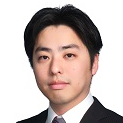Elucidation of Functional Reconstruction in Brain Injury Model via Cell Transplants and Rehabilitation Exercises
A special issue of Cells (ISSN 2073-4409).
Deadline for manuscript submissions: closed (31 October 2021) | Viewed by 426
Special Issue Editor
Interests: stem cell transplantation; neurological disorder; regenerative medicine; electric stimulation; rehabilitation
Special Issues, Collections and Topics in MDPI journals
Special Issue Information
Dear Colleagues,
Cell therapy for brain disorders has various meanings and offers a variety of potentials. Stem cells exist even in adulthood and possess the capacity to self-renew and differentiate into multiple lineages, contribute to normal homeostasis, and exert therapeutic benefits either endogenously or following transplantation in injured organs, i.e., the brain. The transplantation of exogenous cells, which include various stem/progenitor cells and differentiated cells, such as neurons with a specific phenotype, astrocytes, and oligodendrocytes, is readily referred to as a form of cell therapy. Transplanted cells might function as part of a newly developed network in the host tissue or secrete several trophic factors with subsequent neuroprotective/neurorestorative potentials.
Furthermore, exercise ameliorates physical and cognitive impairment of patients with brain disorders, by enhancing unmasking root, enabling axonal sprouting, and, eventually, reorganization of the neural system of the injured brain. Key to neuroplasticity is brain remodeling towards recapitulation of a neurodevelopmental microenvironment, which is conducive to stem cell proliferation and differentiation. However, it is still unclear as to whether rehabilitation therapy promotes cell therapy and enhances the reorganizing of the neural systems of injured brains. The novel concepts in this Special Issue embody and elucidate the damaged brain functional reconstruction mechanism via cell transplants and rehabilitation exercises, which I believe has direct clinical application to various diseases, including brain disorders.
Dr. Naoki Tajiri
Guest Editor
Manuscript Submission Information
Manuscripts should be submitted online at www.mdpi.com by registering and logging in to this website. Once you are registered, click here to go to the submission form. Manuscripts can be submitted until the deadline. All submissions that pass pre-check are peer-reviewed. Accepted papers will be published continuously in the journal (as soon as accepted) and will be listed together on the special issue website. Research articles, review articles as well as short communications are invited. For planned papers, a title and short abstract (about 100 words) can be sent to the Editorial Office for announcement on this website.
Submitted manuscripts should not have been published previously, nor be under consideration for publication elsewhere (except conference proceedings papers). All manuscripts are thoroughly refereed through a single-blind peer-review process. A guide for authors and other relevant information for submission of manuscripts is available on the Instructions for Authors page. Cells is an international peer-reviewed open access semimonthly journal published by MDPI.
Please visit the Instructions for Authors page before submitting a manuscript. The Article Processing Charge (APC) for publication in this open access journal is 2700 CHF (Swiss Francs). Submitted papers should be well formatted and use good English. Authors may use MDPI's English editing service prior to publication or during author revisions.
Keywords
- brain disorders
- cell therapy
- rehabilitation
- motor function
- cognitive function
- functional reconstruction
- regenerative medicine






